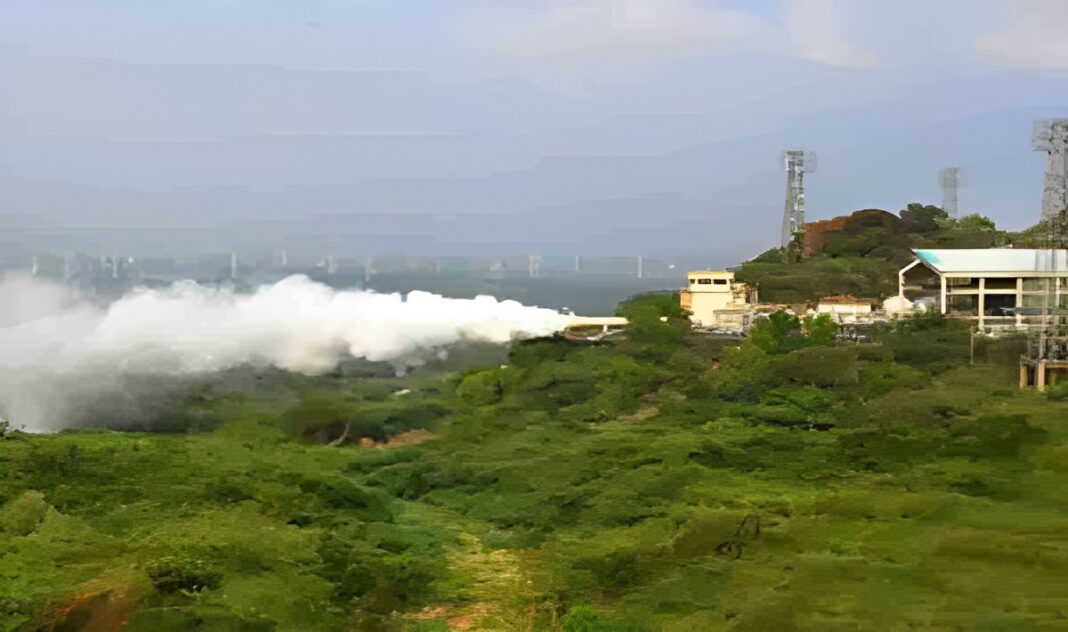INDIA: The cryogenic upper stage of the launch vehicle for the Chandrayaan-3 mission’s cryogenic upper stage, the CE-20 cryogenic engine, underwent a successful flight acceptance hot test, according to the Indian Space Research Organization (ISRO).
The hot test was done for the expected 25 seconds on February 24 at the High Altitude Test Facility of the ISRO Propulsion Complex at Mahendragiri in Tamil Nadu, according to the national space agency, which has its headquarters in Bengaluru.
The test’s propulsion characteristics exceeded expectations and were judged satisfactory, according to an ISRO statement released on Monday.
ISRO says that the cryogenic engine will be further integrated with the propellant tanks, stage structures, and fluid lines to make a fully integrated flight cryogenic stage.
At the U.R. Rao Satellite Center, the Chandrayaan-3 lander underwent an EMI/EMC test earlier this year with success.
It was said that EMI-EMC tests are done for satellite missions to make sure that the parts of the satellite work well in space and are compatible with the electromagnetic levels that are expected.
The ISRO says that this test is an important step towards making the satellites a reality.
Three main modules make up the interplanetary Chandrayaan-3 mission: the propulsion module, the lander module, and a rover.
The need for radio-frequency (RF) communication lines between the modules is necessitated by the complexity of the mission.
According to ISRO, the Chandrayaan-3 lander’s antenna polarisation, launcher compatibility, standalone auto compatibility tests for the orbital and powered descent mission phases, and lander and rover compatibility testing for the post-landing mission phase were all ensured during the test.
A follow-up mission to Chandrayaan-2, Chandrayaan-3 aims to show that safe landing and wandering on the moon can be accomplished from beginning to end. ISRO plans to launch the mission in June.
Launch Vehicle Mark 3 (LVM3) will launch from the Satish Dhawan Space Center in Sriharikota (Andhra Pradesh).
The propulsion module will propel the lander and rover configuration into a 100 km lunar orbit. The Spectro-polarimetry of Habitable Planet Earth (SHAPE) payload on the propulsion module measures the spectral and polarimetric properties of Earth from an orbit around the moon.
Also Read: NASA Nominates First Woman for the Position of Science Chief



